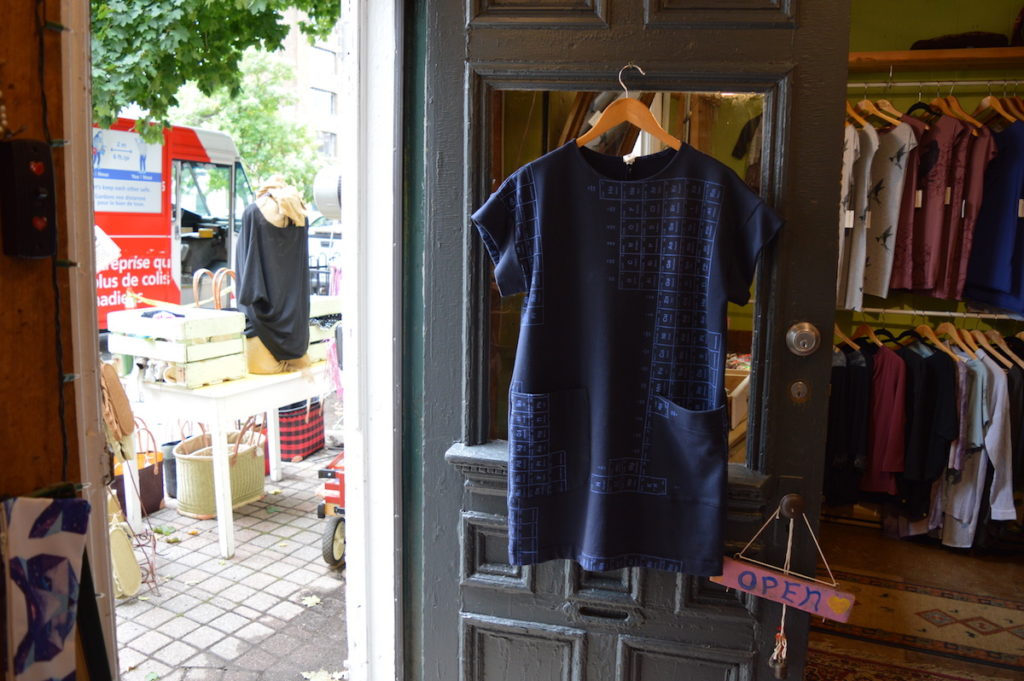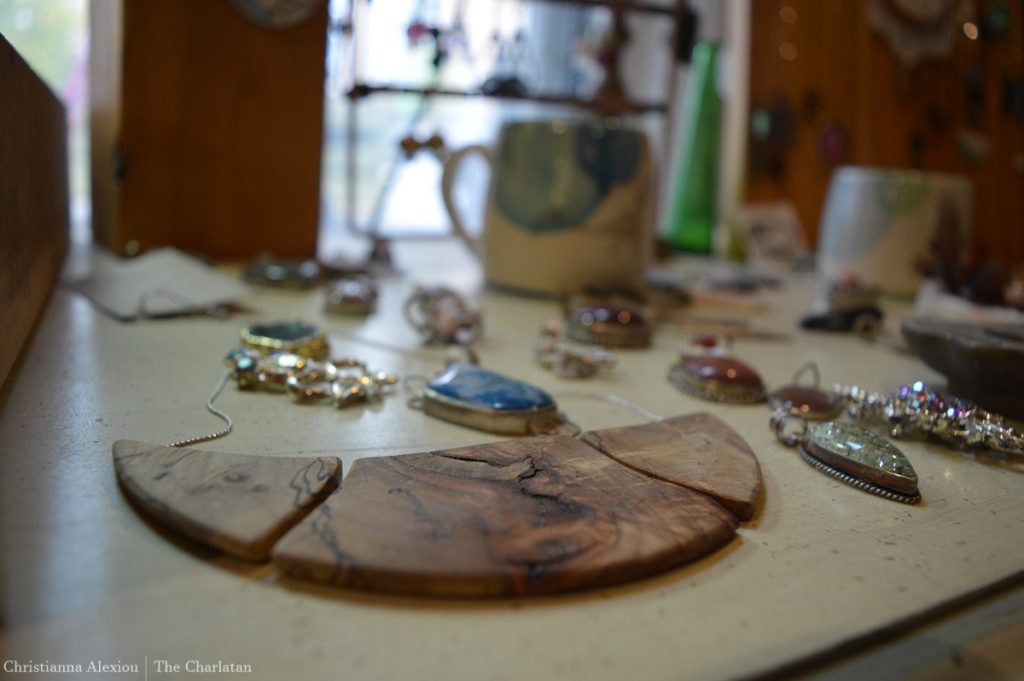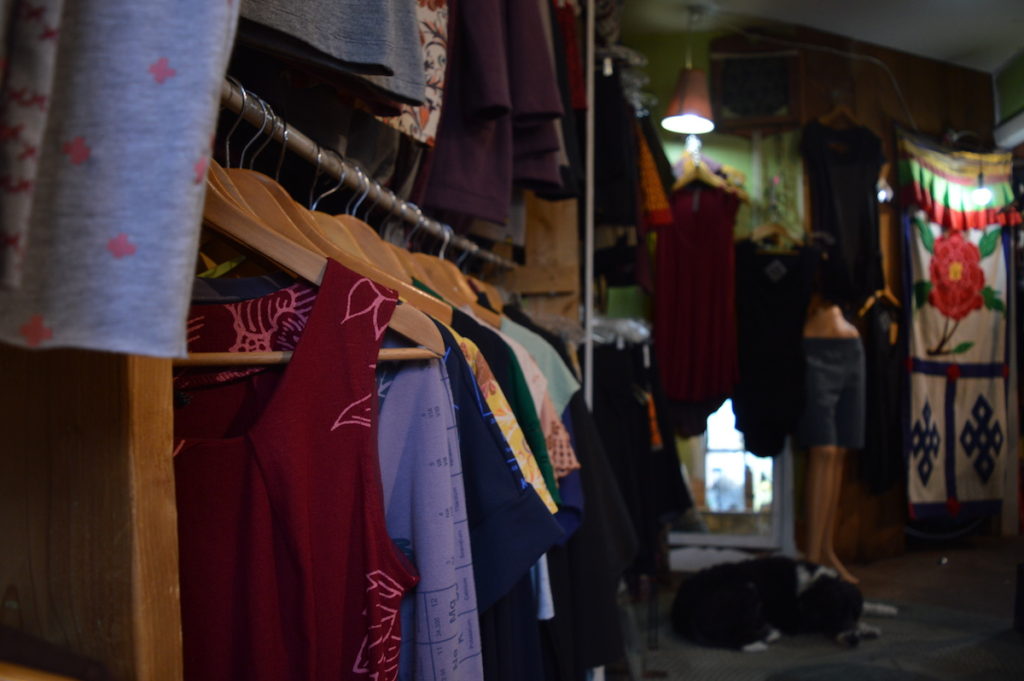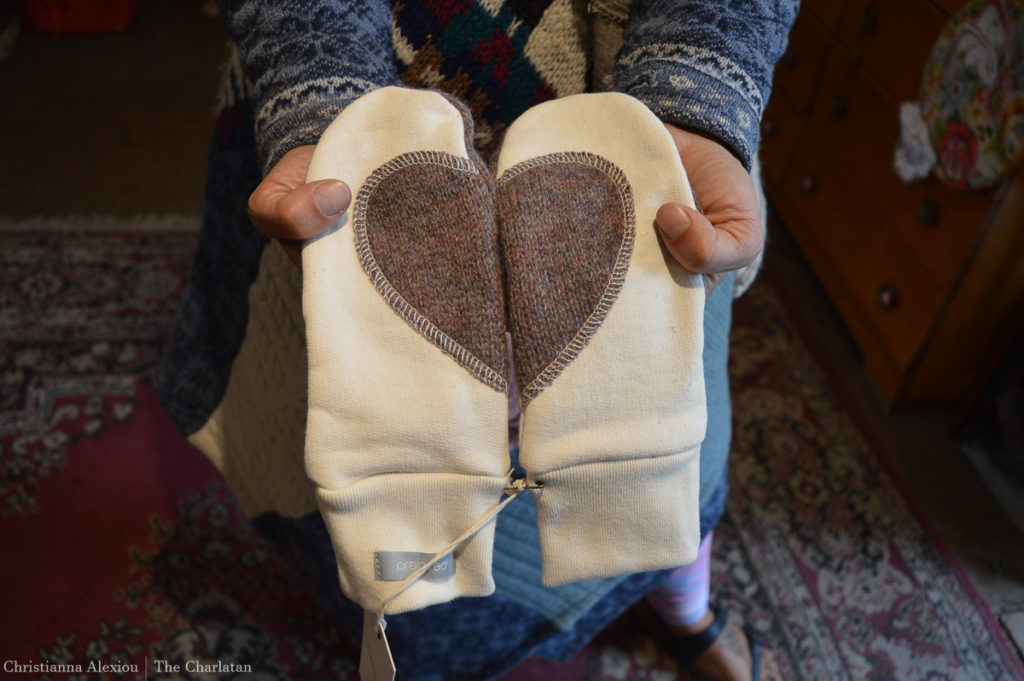While working in Asia, Emma Inns experienced firsthand the impacts fast fashion has on the planet, something she said ultimately led her to open her own store.
“I saw what polyester manufacturing was doing to the planet,” she said. “I really didn’t want to support that anymore.”
Inns is the owner of Adorit Boutique, a sustainable fashion store in Ottawa, which is carbon-neutral and working towards zero-waste.
During her time in Asia, Inns worked in Tibet, Nepal and India.
“I would go to places where the rivers were completely destroyed,” she said. “These are the only water sources for the community, and they are destroyed by the chemicals that the garment factories are pumping into the water system.”
Inns added that she rarely saw proper protocols to discard textile waste at factories.
“I’d do these boat trips and the sides of the river would just be textile waste,” she said. “There’s no dirt anymore.”
According to the United Nations Framework Convention on Climate Change, the fashion industry is responsible for 10 per cent of annual global greenhouse gas emissions. The industry also uses more energy than the aviation and shipping industry combined.
As a result, some consumers—primarily younger ones—are turning to thrift shopping as a way to minimize waste.

Ethical buying complications
With shoppers choosing more eco-conscious brands and opting for thrift shopping, sustainable options have become trendy. However, some local consumers say this trend comes at the cost of low-income and racialized consumers.
A 2019 article from the Berkeley Economic Review, a peer-reviewed academic economics journal based in California, also says thrifting as a solution to textile waste presents its own challenges.
“The rising popularity of thrifting among more wealthy consumers as an alternative to buying from sustainable and ethical fashion brands reduces the already limited options available to low-income communities when it comes to clothing,” the article reads.
Alison Schultz is a third-year human rights student and Climate Action Carleton member, a student-run club focused on combating climate change through activism and advocacy. She said although thrifting has its pros and cons, it can be a great place to start practising sustainability.
According to Schultz, people should not buy second-hand items with the intention to upcycle—the practice of transforming a piece of old or used clothing into something more up to date—or resell, especially if they have the means to go to other stores.
Doing so reduces the amount of quality second-hand clothing available to other groups with lower-income brackets that rely on thrifting.
However, Inns said upcycling and reselling items can be a positive sustainable option, adding that many of the clothes in her store are made out of recycled items which would usually be thrown out.
“If you are going to take the time to [upcycle] that’s awesome,” Inns said. “If you’re recycling and reusing, that’s great.”

Prices as a barrier
Purchasing solely from sustainable clothing brands can be more expensive due to material and manufacturing, according to Schultz.
“[Sustainable brands are] paying ethical wages and some even pay a higher wage than they need to,” Schultz said. “People are constantly consuming and constantly buying new clothes and new textiles, and then there’s more textile waste.”
Inns said there are many customers that come in looking to replace their entire closet, but she tries to remind them that using up what they have already is important. She added that being sustainable is a process and major lifestyle change.
Since sustainable fashion can be expensive, Inns encourages people to buy six to 10 sustainable items a year and to thrift the rest of their items.
“[Sustainable clothes] cost a little bit more but they’re going to last you a lot longer, therefore reducing your own textile footprint significantly,” she said. “That’s sort of the goal—to create less waste.”

Environmentally-conscious students
In Ottawa, several local brands promote sustainable lifestyles through fashion.
Grace Kirby, a fourth-year health science student at Carleton, created her own sustainable fashion business, Circle Goods. According to Kirby, her intention behind creating the business was to try and help people become more sustainable through their clothes without spending a ton of money.
Kirby thrifts and consigns clothing items for her curators to find items that will fit a customer’s personal style.
“There’s a lot of people that don’t know how to thrift,” Kirby said. “I wanted to make it really simple for them, and even with the curators, there’s just a lot of people that don’t know how to work vintage clothing into their wardrobe.”
When she initially launched Circle Goods, customers were able to rent clothing to test if it would be a good addition to their closet.
“Instead of buying new things every month, you can still mix up your wardrobe and wear new things, but in a more sustainable way,” Kirby said.
Despite initial success, she said she is currently reworking her business model to better fit the needs of her customers.
“People are kind of willing to sacrifice their values just for their clothing and their fashion style because it represents who they are, but I think that the values and the ethics should be just as important,” Kirby said.

Fast fashion and microfibres
Shaun Forrest, a Carleton geography PhD student conducting research with the Aquatic Ecosystems & Environmental Change Laboratory, is well aware of the large amounts of waste that the fashion industry creates.
“People rotate through closets quite a lot, so there’s always quite a wastage of clothes, and they just create more microplastics,” Forrest said.
Forrest’s research looks at microplastic pollution in the Ottawa River, which consists of any piece of plastic smaller than five millimetres—including exfoliants and microbeads—which are called primary microplastics because of their intentional production.
Any plastic purposefully designed for the marketplace and consumer use would fall into the primary microplastics category. For instance, this category would include toothbrush bristles since they have intentionally-designed plastic bristles.
According to Forrest, secondary microplastics—those that are unintentionally fabricated—include fragments from larger pieces of plastics and microfibres released from clothing when washed.
A study published by Environmental Science & Technology Letters found one pair of used jeans can release 4,100 to 56,000 microfibres per wash—which act similarly to microplastics, Forrest said.
According to Forrest, there has not been a lot of distinction between microplastics and microfibres up to this point.
“Do you classify it as [a microplastic] or do you push it aside as a natural one, even though it might cause the same harm as an actual plastic?”
These microfibres end up in wastewater treatment plants, which are not designed to remove plastics of such a small size, Forrest said.
“It’s at no fault of the wastewater treatment plants. They were designed specifically for a particular task and now you’re throwing this new variable into the mix,” he said.

Possible solutions
Opting for natural materials, such as cotton or wool, could present a possible solution to the microplastics found in synthetic fabrics, Forrest said.
According to Inns, at Adorit Boutique, they try to source cotton, bamboo and hemp, which are sustainable fabrics that typically last longer.
However, even natural materials can have additives—such as dyes and flame retardants—that can be harmful to the environment and act as plastics, Forrest explained.
“Whatever you add to these clothings could change the natural makeup of these fibres and make them act more like a microplastic,” he said.
Natural white fibre materials will most likely not contain plastic or anything that could potentially act as a plastic, Forrest said. He explained this is because those materials will not have any additives.
Forrest said some companies are working on creating a net to catch microplastics and microfibres to be used when people do laundry at home, but the issue of how to dispose of the contents persists.
“You don’t just dump them into the trash can because then they’re going to go to a landfill and end up in the same place,” he said.
Forrest explained there is currently a lack of evidence in regards to the negative effects of microplastics and microfibres. However, he estimates if there is too much plastic, it will fill up our waterways and pollute the air, potentially causing detrimental effects for humans and animals alike.
“There’s just so much more research that has to be done,” he said.
After returning to Canada, Inns said she found it increasingly difficult to find ethically-made Canadian items. She said she hopes more consumers will start thinking about how to reduce textile waste in the growing fight to combat climate change.
“I feel very stressed out and afraid about climate change, and I think that if everybody could do a little bit more than they’re doing the world would maybe be OK,” Inns said. “It’s our responsibility.”
Featured image by Christianna Alexiou.





